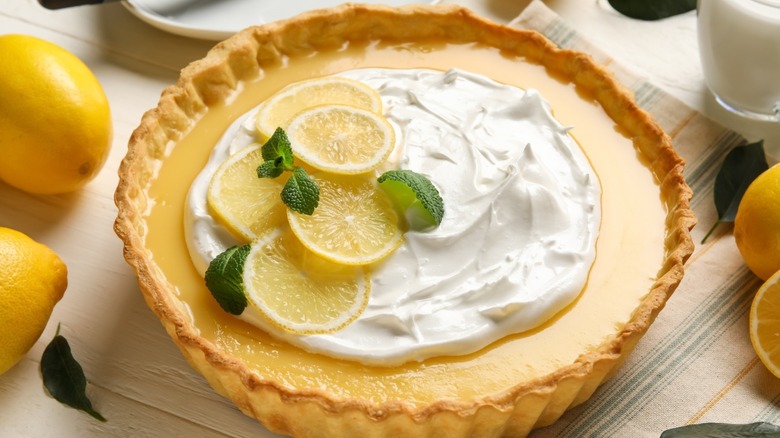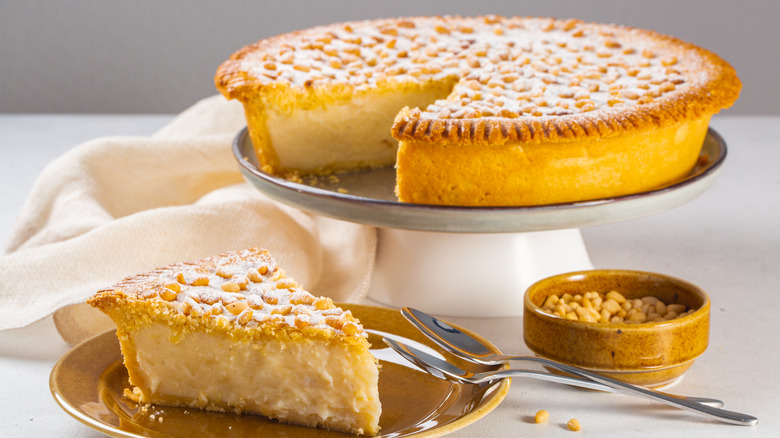The Baking Mistake That Will Leave You With Soppy Custard Pies
When you're making a pie, there are two major components to master — the filling and the crust. Both of these elements work in unison in order to create a truly mouthwatering final product. You want the crust to be buttery, flaky, and perfectly golden brown. And, you want the filling to be flavorful with the right texture that contrasts the crust beautifully.
When you're trying to avoid making a fruit pie too wet, getting the texture right is a matter of ensuring you have the right amount of thickener to transform the juices being released by the cooked fruit. Custard pies are a whole different ball game. Typically, they're thickened via the eggs baked within the pie, as Crafty Baking explains, as well as with the standard starches used to thicken fruit pies, such as cornstarch or flour. While the eggs are the magic ingredient that helps you achieve that thick, smooth consistency, they also make it a bit more challenging to achieve the perfect texture in your pie.
Unfortunately, both under-baking and over-baking will jeopardize the texture of your pie. As per Moment of Science, if you overbake your custard pie, the protein molecules within the egg whites can toughen and release water molecules, creating a soupy yet slightly curdled texture — definitely not what you want. However, not baking your custard pie for long enough will cause the amylase and lysozyme enzymes in your eggs to break down the starches that act as thickeners, likewise producing a soppy pie.
Keep an eye on your custard's temperature
It may be easier said than done, but the simple solution to avoid soppy custard pies is to bake them for the right amount of time — you don't want to take them out of the oven too early, but you also don't want to leave them in for too long and end up with a curdled mess.
As with getting the perfect cook on a cut of meat, checking the temperature is your best friend — and will help you avoid under or over-baking your custard pie (you may also want to check your oven temperature to ensure it's accurate). According to Cook's Illustrated, baked custards should be done when they measure between 170 to 175 degrees Fahrenheit. A little bit over is okay, but if your custard goes beyond 185 degrees, you risk those milk proteins creating that undesirable curdled texture.
If you're making the type of pie where you prepare a custard interior in a saucepan before it enters the pastry crust, such as many citrus pies with a creamy curd-based filling, Chicago Tribune suggests you stir frequently and stay patient, keeping the stovetop temperature at a medium heat so you don't risk overcooking. Finally, if you know the custard filling needs a bit longer to bake but the rest of your pie is getting a bit too brown, simply cover the crust with foil to prevent further browning and lower the temperature a little bit, as The Columbus Dispatch advises.

